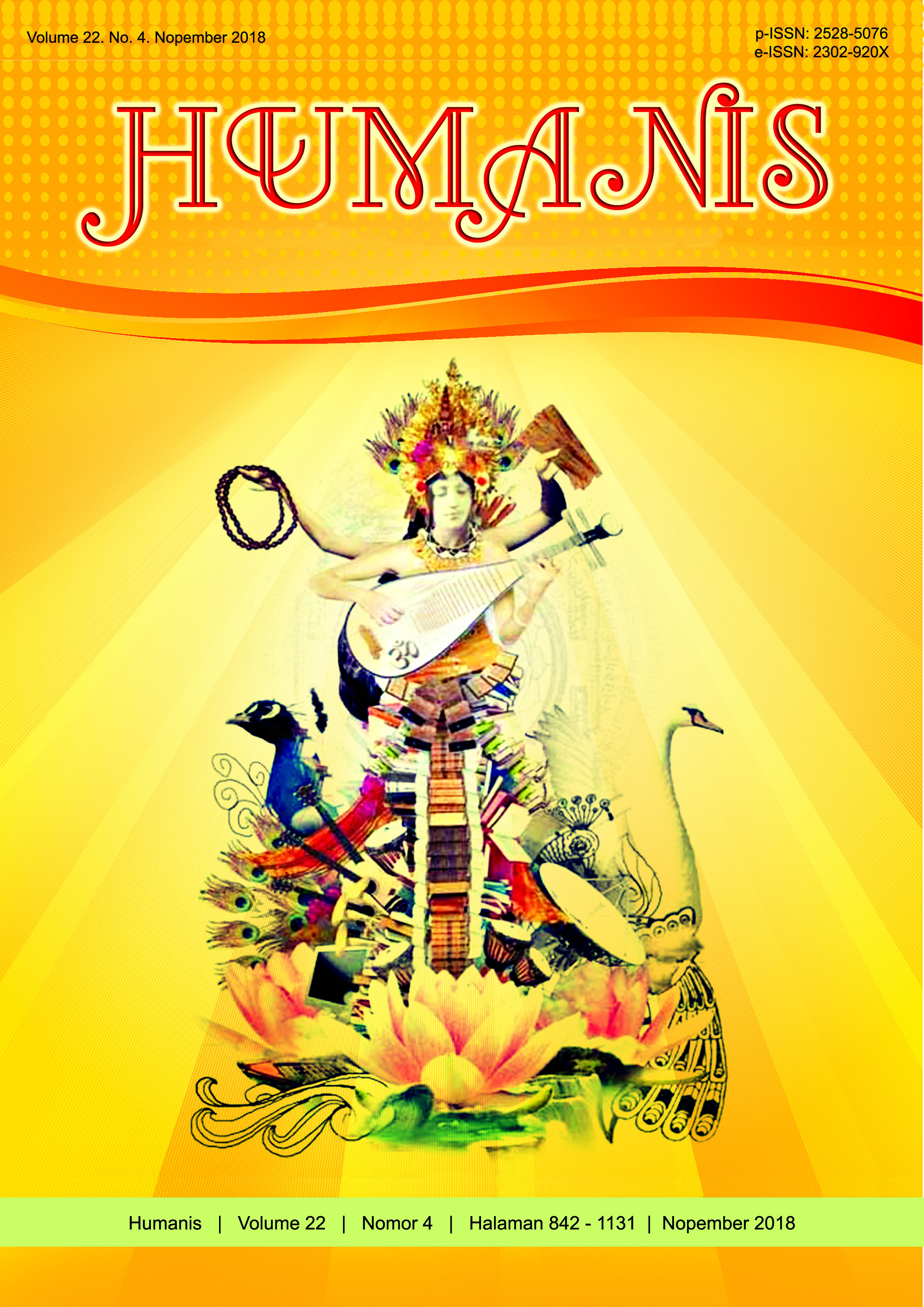Ujaran Maaf dalam Bahasa Jepang dan Bahasa Bali
Abstract
This study is focused to the speech of apology found in Japanese novel entitled Houkago ni Shisha wa Modoru by Akiyoshi Rikako and Balinese novel entitled Tresnane Lebur Ajur Satonden Kembang by Djelantik Santha. The aims of this study are to know the functions and factors that affect and also the comparison of apology speech between Japanese and Balinese languages. Theori use in this study is theory of level politeness factors proposed by Mizutani and Mizutani (1991) and apology proposed by Alwi (2005). Method and technique of collecting the data used in this study are observation method and descriptive analysis technique. The result of this study showed that there are twelve speechs of apology that functionate as a sense of regret and six speechs of apology as a permission request found in the Houkago ni Shisha wa Modoru novel. The factors that influence the speech of apology in Japanese are the proximity of relationship and age factors. There are fifteen speechs of apology in Japanese. Meanwhile, in Balinese novel entitled Tresnane Lebur Ajur Satonden Kembang one speech of apology who has a function of exemption from the punishment, seven speechs of apology as the sense of regret, four speechs of apology as permission request and one speech of apology as the humble act. Factors that influence the speech of apology in Balinese language are social status and age factors. In Balinese, there are six kinds of apology speech. The data that has been analyzed show that Japanese and Balinese language have two similaries and three differences.


















